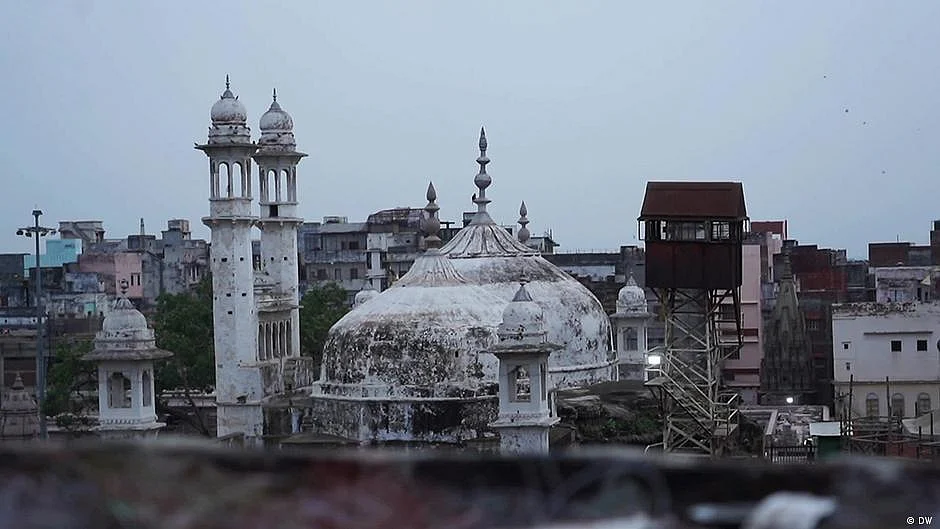Gyanvapi dispute: Petitioner says plea based on 'British map'
Advocate Anupam Dwivedi said the purpose of the court-ordered survey was to find out the exact location of the deities and admitted that only an examination could determine the correct location

Jitendra Singh Vishen, head of the Vishwa Vaidik Sanatan Sangh (VVSS), which is among the petitioners in the Kashi Vishwanath-Gyanvapi complex case, has said their petition is based on a "British-era map", which also formed the basis of a court case filed in 1936 by three Muslims who had demanded that the land be handed over to the community.
Visen told reporters, "If you inspect the premises today, you can find that 90 per cent of the structures are according to the map. Moreover, in the 'shastras', Lord Ganesha is on the northern side of the Adi Vishweshwar Temple, while Shringar Gauri is on the western side and the southern side has Kartikeya. Many parts in the books may be correct but some questions may remain," he added.
Advocate Anupam Dwivedi, one of the lawyers representing the petitioners, however, said the purpose of the court-ordered survey was to find out the exact location of the deities and admitted that only an examination could determine the correct location.
Earlier, Acharya Ashok Dwivedi, who was chairman of the Kashi Vishwanath Temple Trust between 2013 and 2019, had claimed that two books about the history of Varanasi say the idols are located elsewhere.
The two books, he said, were 'Varanasi Vaibhav', written by scholar Kubernath Sukul, and 'Kashi Gaurav' by Shivananda Saraswati, a disciple of 'Dharm Samrat' Karpatri, a renowned spiritual leader.
"In the book by Sukul, on page 221, the presence of Maa Shringar Gauri has been mentioned (as located) on the ishan side (north-eastern) of the Kashi Vishwanath Temple, and inside the Annapurna Temple (within the Kashi Vishwanath Temple Corridor). In another book by Shivananda Sarasvati, the presence of the deity has been mentioned as plot 3/58 in Mohalla Bansphatak (at a distance of over 100 metres from the Kashi Vishwanath Temple)," Dwivedi stated.
He alleged that, "People are trying to gain cheap publicity by filing such petitions."
He further said, adding that a commission should be set up to locate the Maa Shringar Gauri idol.
Maa Shringar Gauri is believed to be a manifestation of Hindu God Shiva's wife Parvati. A carving of the deity, according to the petitioners' plea, is located along a platform to the back of the Gyanvapi Mosque, outside the barricading that surrounds it. The public is not allowed to offer prayers here except twice a year during Navratri.
It is the location of this 'sthal' that is being contested by Dwivedi, who claims that worship at the site mentioned in the petition began only after campaigns by Hindutva organisations.
"We and our families have been staying here for the past 800 years but have never heard that there was a Shringar Gauri Sthal at the place where it is being talked about. We only got to know about it when outfits like Shiv Sena and VHP started to offer water to the carvings there in 2004-2005," Dwivedi said.
He also claimed that the Gyanvapi Mosque was previously known as 'Alamgiri Masjid', adding that this was acknowledged by historian James Princep in his book 'Benares Illustrated' (1833).
Follow us on: Facebook, Twitter, Google News, Instagram
Join our official telegram channel (@nationalherald) and stay updated with the latest headlines
